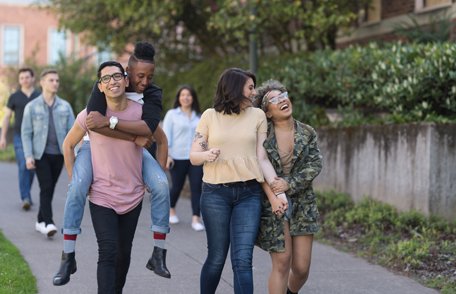Sexual Violence is Preventable

Sexual violence impacts every community and affects people of all genders, sexual orientations, and ages. Anyone can experience sexual violence and it can happen anywhere—even online.
Sexual violence refers to sexual activity when consent is not obtained or freely given. Sexual violence affects millions of people each year in the United States. The official numbers are likely an underestimate because many cases go unreported. Survivors may be ashamed, embarrassed, or afraid to tell the police, friends, or family about the violence. Check out the most recent CDC sexual violence data. Sexual violence includes child sexual abuse involving victims younger than age 18 as well as sex trafficking, which is a type of human trafficking and is a form of modern-day slavery.

CDC focuses on preventing sexual violence before it happens. Changing social norms, teaching skills, empowering girls and women, and creating protective environments can help prevent and reduce sexual violence. We all have a role to play in prevention.
Parents, school staff, and other caring adults can:
- Teach skills to prevent SV.
- Help youth build positive communication skills, including conflict resolution and how to handle emotions in a healthy way.
- Practice and model healthy, safe dating and intimate relationships to teach youth dating and relationship skills.
- Check out CDC’s Dating Matters: Strategies to Promote Healthy Teen Relationships. There are parent programs as well as training for educators.
- Promote healthy sexuality by discussing topics like sexual behavior, sexual communication, respect, and consent.
Schools and workplaces can:
- Create protective environments.
- Improve safety and monitoring in schools by addressing areas where students feel less safe, identifying safe spaces and staff support for students, and creating an atmosphere of intolerance for harassment and violence.
- Establish and apply proactive workplace sexual harassment prevention policies and procedures that include commitment from top management, zero tolerance, notification to applicants and new hires of harassment-free environments, regular organizational assessments, and consistent, specific training to reduce workplace SV behaviors.
Everyone can:
- Promote social norms that protect against violence.
- Speak up against sexist language or behaviors that promote violence.
- Offer to help or support in situations where violence may occur or has occurred.
- Support Survivors to Lessen Harms.
- Know where and how to get help.
- Victim-centered services like rape crisis centers provide a safe, healing environment where survivors can access resources and victim advocacy.
- Evidence-based treatments, like Trauma-focused Cognitive Behavioral Therapy (TF-CBT), can help victims address SV’s negative effects, such as depression, anxiety, and post-traumatic stress disorder (PTSD).
- Treatment for children who may have been exposed to violence in the home or community and are at-risk for violence perpetration or other serious behavioral problems is available. One example is the Children with Problematic Sexual Behavior Cognitive-Behavioral Treatment Program: School-Age Program (PSB-CBT), which is meant to reduce or eliminate sexual behavior problems.
- Know where and how to get help.
- If you are or someone you know is a survivor of SV:
- Contact the Rape, Abuse, and Incest National Network (RAINN) hotline at 1-800-656-HOPE. Help is free, confidential, and available 24/7. Get information at RAINN.
- Contact your local emergency services at 9-1-1.
- Check out the National Sexual Violence Resource Center’s (NSVRC) Resources for specific audiences:
- Learn how to recognize the signs of human trafficking by visiting the National Human Trafficking Hotline’s Recognizing the Signs website.
- If you or someone you know is being trafficked, contact the National Human Trafficking Resource Center.
-
- Call 1-888-373-7888 (TTY: 711) Text 233733
- Use the online Live Chat
- Sexual Violence Prevention Resource for Action [3 MB, 46 Pages]
This Resource for Action, formerly known as, “technical package,” represents a select group of strategies to help communities use the best available evidence to prevent sexual violence. This resource is also available in Spanish. - CDC’s Sexual Violence Prevention Resources
CDC’s webpage that contains sexual violence prevention resources. - CDC’s Dating Matters®: Strategies to Promote Healthy Teen Relationships
Dating Matters is a teen dating violence prevention model to stop teen dating violence before it starts. - National Sexual Violence Resource Center (NSVRC)
NSVRC identifies and disseminates information, resources, and research on all aspects of sexual violence prevention and intervention. - Raliance
Raliance is a collaborative initiative dedicated to ending sexual violence and is a resource for policymakers, advocates, service providers, prevention practitioners, and the media.
- National Domestic Violence Hotline
Call 1-800-799-7233 and TTY 1-800-787-3224. - Love Is Respect National Teen Dating Abuse Helpline
Call 1-866-331-9474 or TTY 1-866-331-8453. - Strong Hearts Native Helpline
Call 1−844-762-8483. - CDC’s VetoViolence Facebook Page